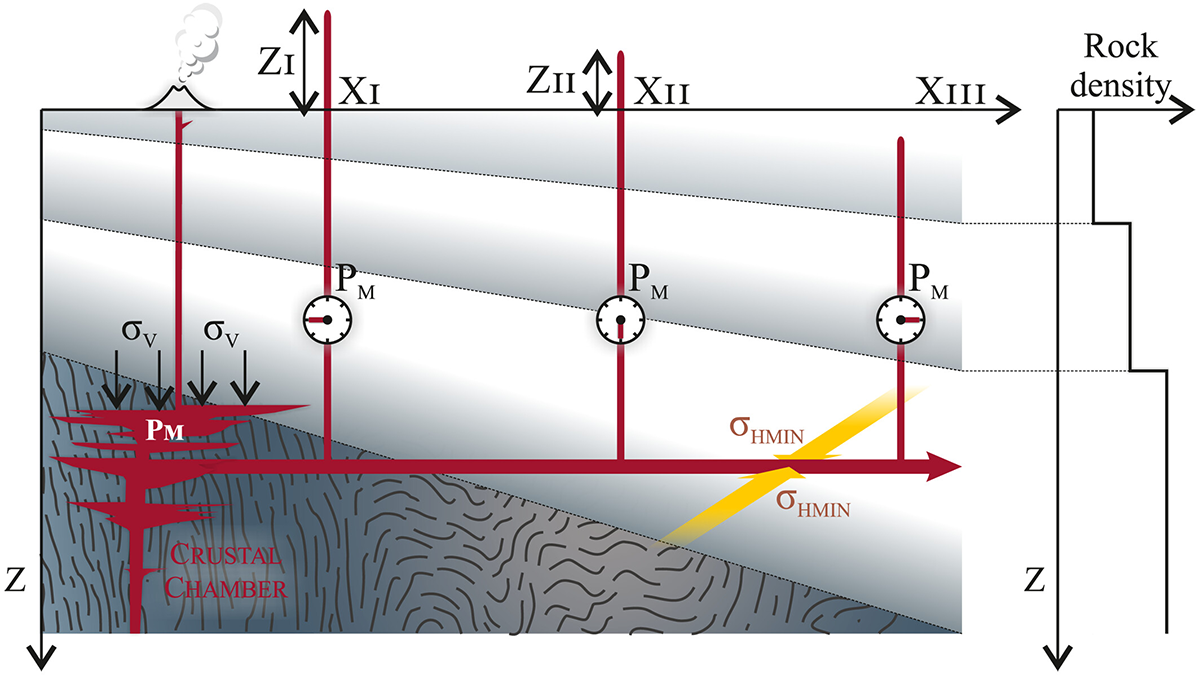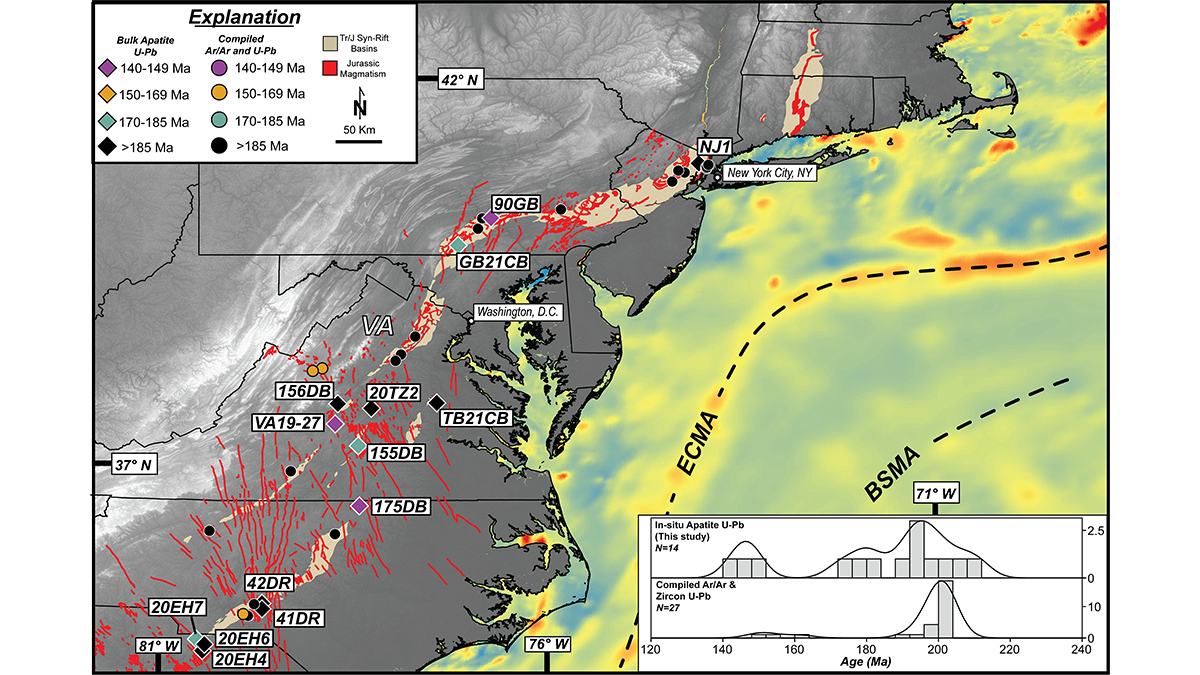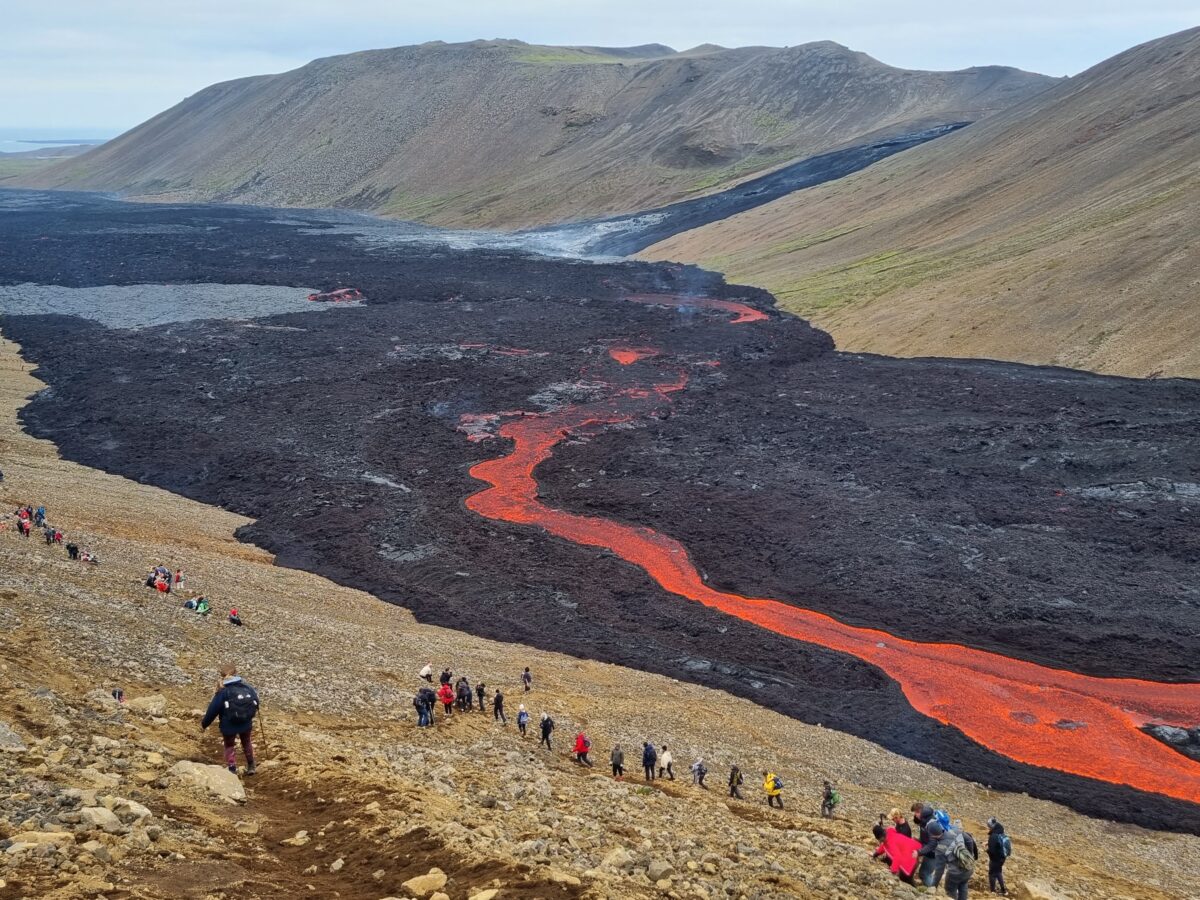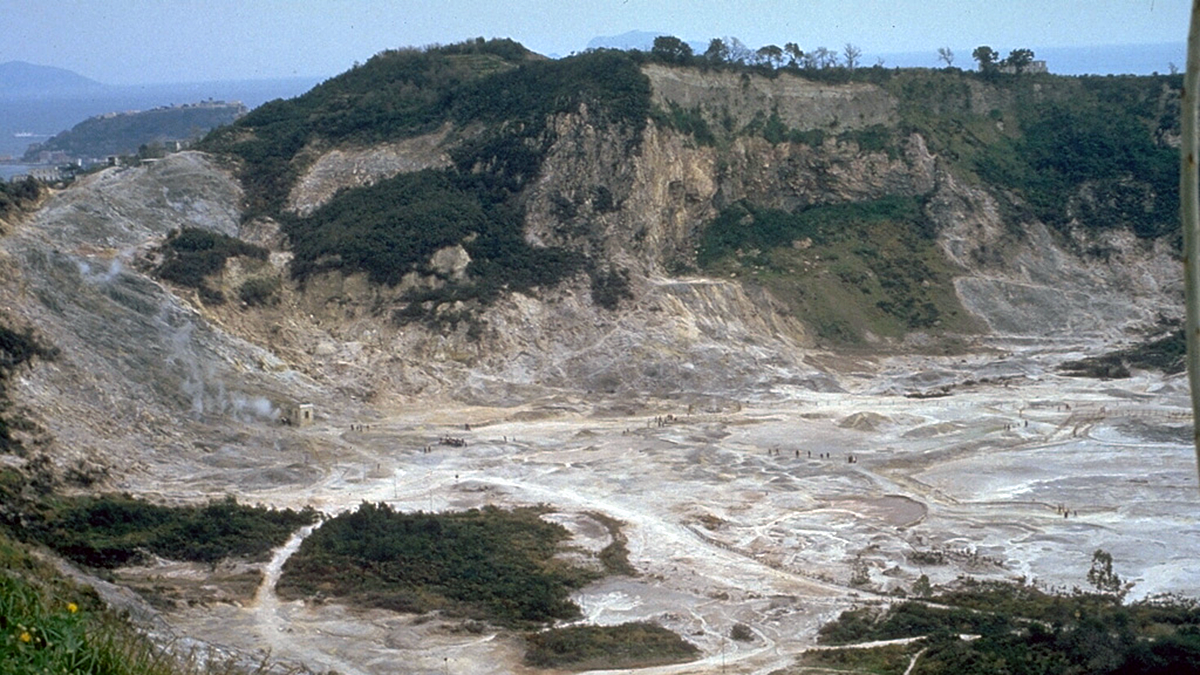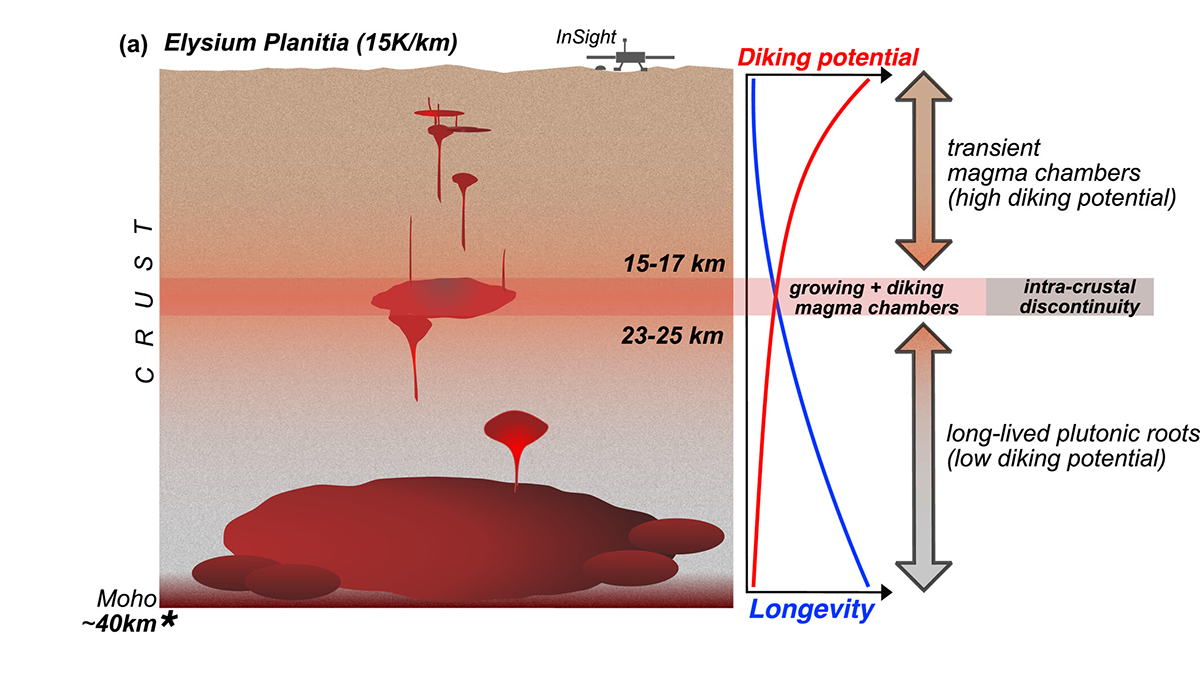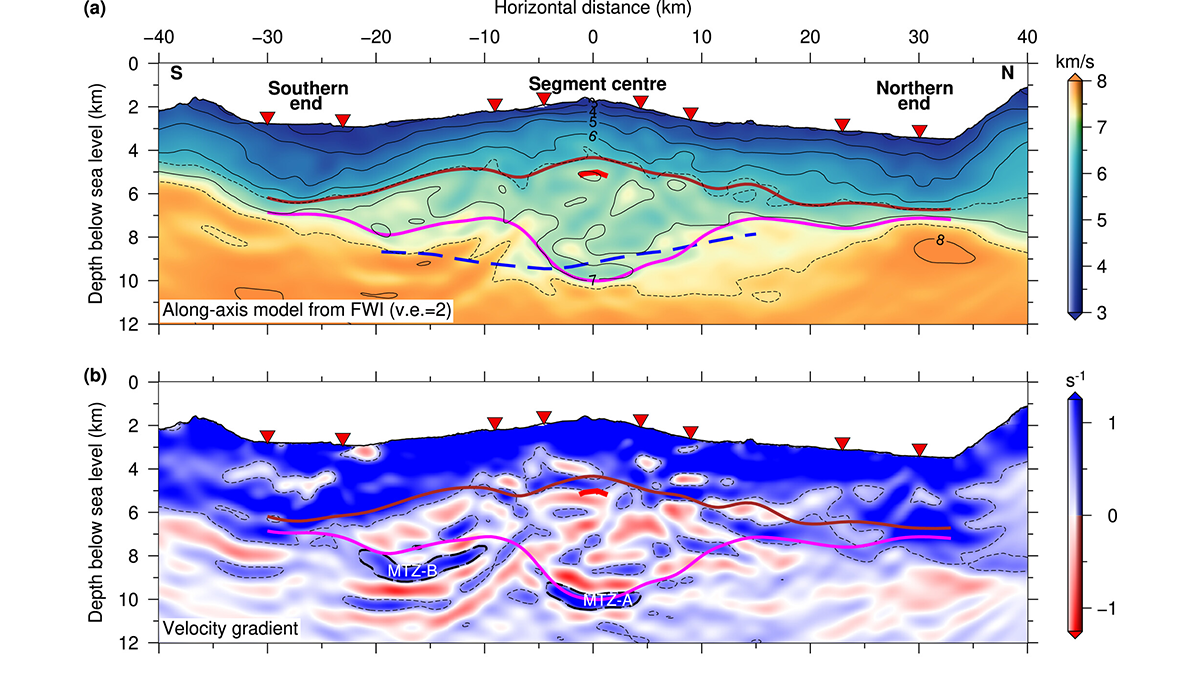A new analysis of subtle seismic velocity changes provides insights into the coupling of magma reservoirs of Hawaiian volcanoes.
lava & magma
The Invisible Brake: Near‑Surface Cooling Stalls Giant Dyke Swarms
Sill-based pressure reconstructions show Mull’s giant dykes had eruption-capable pressures, but near‑surface groundwater cooling increased magma viscosity and stalled lateral propagation.
Webb Telescope Spies Io’s Volcanic Activity and Sulfurous Atmosphere
New James Webb Space Telescope images reveal cooling lava, volcanic sulfur monoxide gas, and sulfur gas emissions created by interactions between plasma and the moon’s atmosphere.
Three Magmatic Pulses Helped Rifting Transform into Seafloor Spreading
A new geochronology of Mesozoic magmatism along the eastern margin of North America shows that continental breakup involved three distinct pulses of magmatism that localized extensional deformation.
Coupled Isotopes Reveal Sedimentary Sources of Rare Metal Granites
Using coupled isotopes, a new study shows that a class of economically important granites are derived by sediment melting without mantle input.
Matching Magma Dikes May Have Different Flow Patterns
A set of lab experiments involving a laser, gelatin, and xanthan gum explored how varying flow patterns between dikes with similar speeds and shapes could affect eruption predictions.
Atomic-Scale Insights into Supercritical Silicate Fluids
Water-induced depolymerization enhances fluid mobility in deep Earth, offering new insights into magma transport and isotope signatures in arc lavas.
Deflected Dikes Perturb the Plumbing System
A multidisciplinary synthesis of the Campi Flegrei, Italy volcanic setting highlights the importance of sub-caldera layering for magma dynamics.
Martian Magmas Live Long and Prosper
The depths, longevity, and potential to generate silicic compositions of magma chambers are linked to crustal temperature, which varies across Mars and over its geological history.
Seismic Images Show Major Change Along the Mid-Atlantic Ridge
New seismic images of the Lucky Strike slow-spreading segment of the Mid-Atlantic Ridge show thick lower crust at the center that thins in both along-ridge directions.


